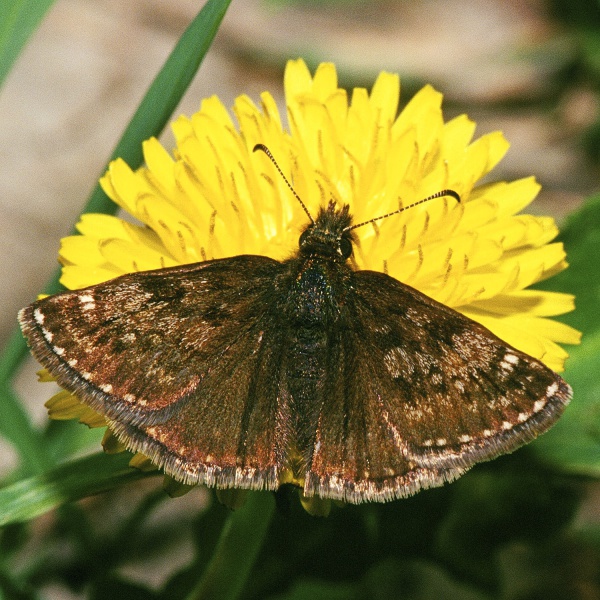Facts About Dingy skipper
The dingy skipper, a small butterfly from the Hesperiidae family, is found across Europe, Central Asia, and the Amur region. Scientifically named Erynnis tages, it thrives in open grassy areas up to 2,000 meters above sea level. This butterfly typically has two generations per year from May to August, although in northernmost regions and higher elevations, there may be only one generation annually. In Europe, its caterpillars feed on various plants including Eryngium, Lotus, Coronilla, Medicago, and Hippocrepis. A subspecies, E. t. unicolor, is found in regions such as Transcaucasia.
In the British Isles, the dingy skipper perfectly camouflages with its brown and grey coloration, often being mistaken for moths such as the grizzled skipper or the burnet companion. It rests with its wings spread out like a moth and is sporadically found across Britain, extending as far north as Scotland, with isolated colonies in places like Inverness. It is one of only two skipper species in Ireland, predominantly seen along the western coast. The dingy skipper inhabits a variety of environments including chalk downlands, woodland clearings, coastal dunes, and even areas along railway lines. Unfortunately, the population of this butterfly is in decline in regions such as the UK and Armenia.
The life cycle of the dingy skipper begins with eggs laid on bird's-foot trefoil leaves. The caterpillars create small shelters by spinning leaves together and feeding until they are fully grown by August. They construct a hibernaculum to survive the winter and pupate in the following spring without the need for further feeding. Adults are typically on the wing from mid-May to mid-June.

 Ireland
Ireland